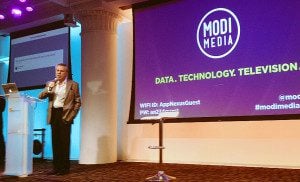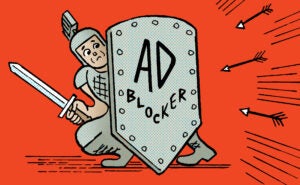 Television may be a little late to the programmatic party, but addressable TV promises to blend performance efficiencies with proven sales lift – and that’s changing the face of the TV buy.
Television may be a little late to the programmatic party, but addressable TV promises to blend performance efficiencies with proven sales lift – and that’s changing the face of the TV buy.
Media agencies were historically agents of the upper funnel, but data and technology are redefining the awareness and consideration phase.
“A client used to give you a bunch of money and the only KPI to which you were held was pricing and awareness,” said Irwin Gotlieb, chairman of WPP-owned media investment agency GroupM, speaking Monday at a client summit in New York.
“A few clients took it a step further and looked at unaided awareness but that’s sort of where our world ended.”
Once disparate data sets – like television tune-in and third-party shopper data – are coming together. Along with greater automation of television workflows, that’s enabling more sophisticated segmentation and analytics.
“Data and technology fundamentally affords us a way to deal with more than just the top of the funnel,” Gotlieb said.
As such, it’s given rise to specialized units within the traditional holding company that are tasked with understanding people – not just program schedules.
Where Branding And The Bottom Of The Funnel Meet
GroupM’s advanced TV agency Modi Media is one example. The unit, launched in January 2014, now employs about 25 and manages in upward of $160 million in household addressable spend, which represents roughly 60% of the addressable TV market, according to Rino Scanzoni, chief investment officer for GroupM.
Despite the demand for and opportunity of addressable TV, there are a number of challenges still stymying growth in the space.
The most obvious is access to inventory, since the companies with historical access to household viewers were the satellite operators and cable multiservice operators.
Most addressable inventory today is local inventory (representing two minutes per hour), which is carved out of national network TV schedules, as well as dynamic ad insertion in video on-demand pods.
“This marketplace will move into national sphere as more cable content providers are challenged with getting subscriptions for cable fees,” Scanzoni predicted. “One option may be to get access to those households through their various distribution agreements. Then you have OTT, where you can direct ads to specific households.”
Another challenge is the lack of consistency in addressable TV campaigns.
Sometimes there are disparities between campaigns because clients use any number of third-party data sets, which, for an auto advertiser, may range from Experian’s auto registration data derived from DMVs to Acxiom and Polk.
Thus, addressable TV optimization is often highly customized and not easily replicated across campaigns.
“To drive addressability at scale, it involves multiple conversations with multiple systems and advertisers are flooded with someone trying to sell them something that looks and smells like addressability,” said Michael Bologna, president of Modi Media.
And addressable TV benefits a certain threshold of advertiser – namely, your target has to be narrow enough and your price point can’t be too low. Otherwise, it’d make more sense to do a national buy and absorb the waste.
Adoption of addressable TV is strongest among verticals like consumer-packaged goods, automotive and media companies seeking to drive tune-in among their viewership and impact on sales for that network’s advertisers.
Although the industry harps on programmatic TV – which may or may not reach real-time or primetime status, depending on who you ask – addressable TV, along with dynamic ad insertion in VOD, are areas where automation of the TV-buying process is already proving demonstrable ROI, Scanzoni added.
The industry is at a convergence of mass media branding and one-to-one marketing, addressable TV being a big harbinger, said Dave Matthews, CRO for mobile ad platform 4Info.
“It’s frightening, it’s complicated, but the results are worth it,” he said. “We’re moving into a world where it’s not about CPM. It’s about sales lift.”














